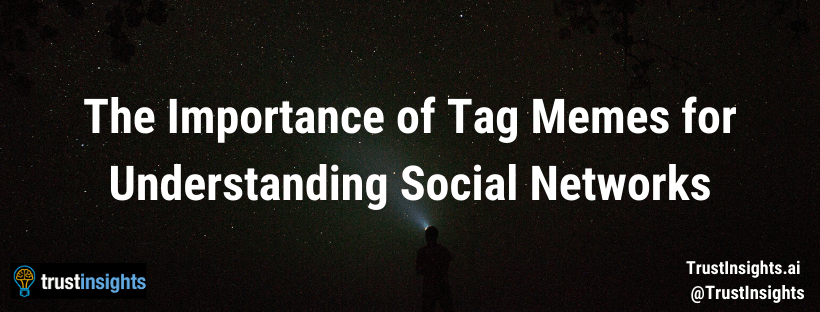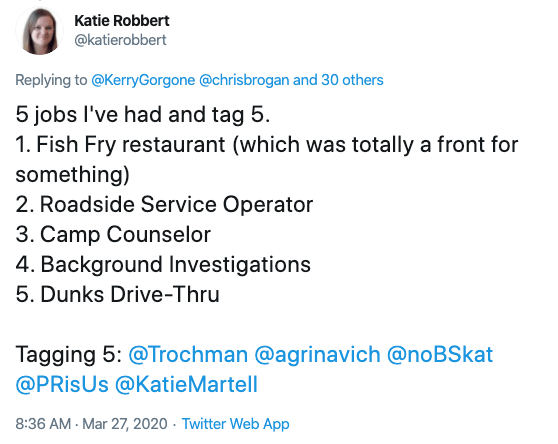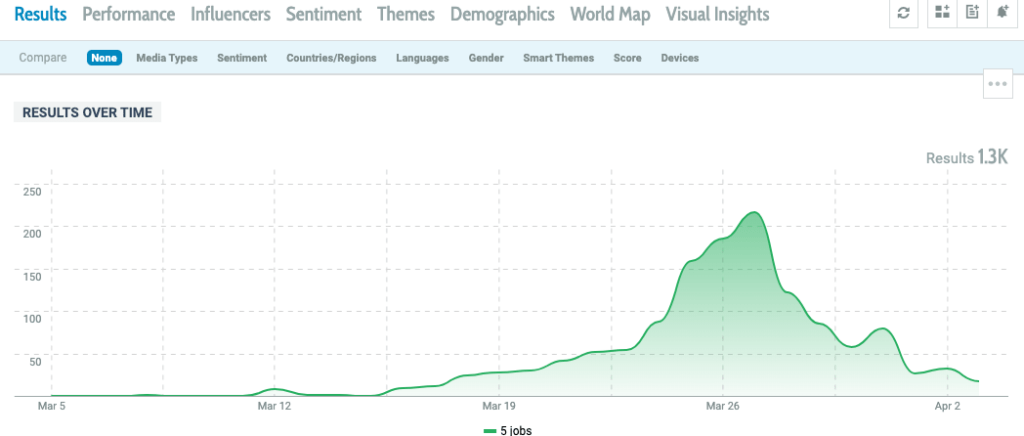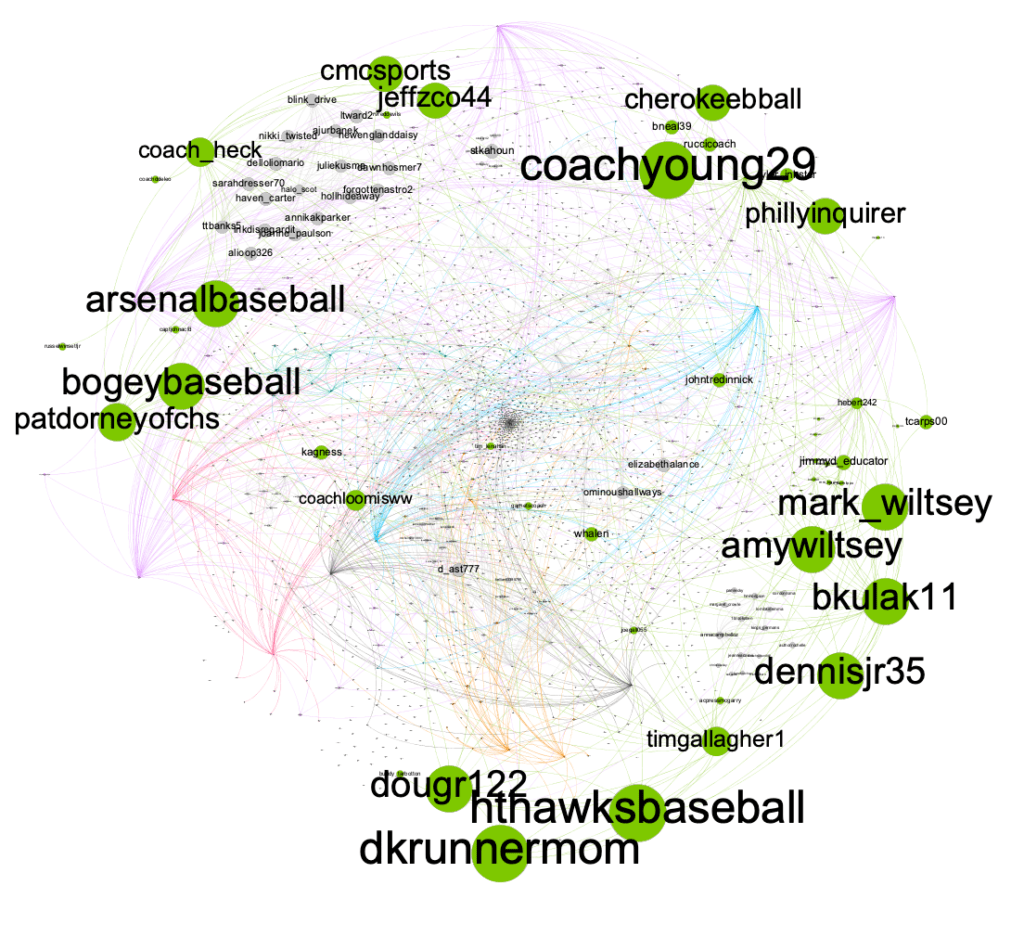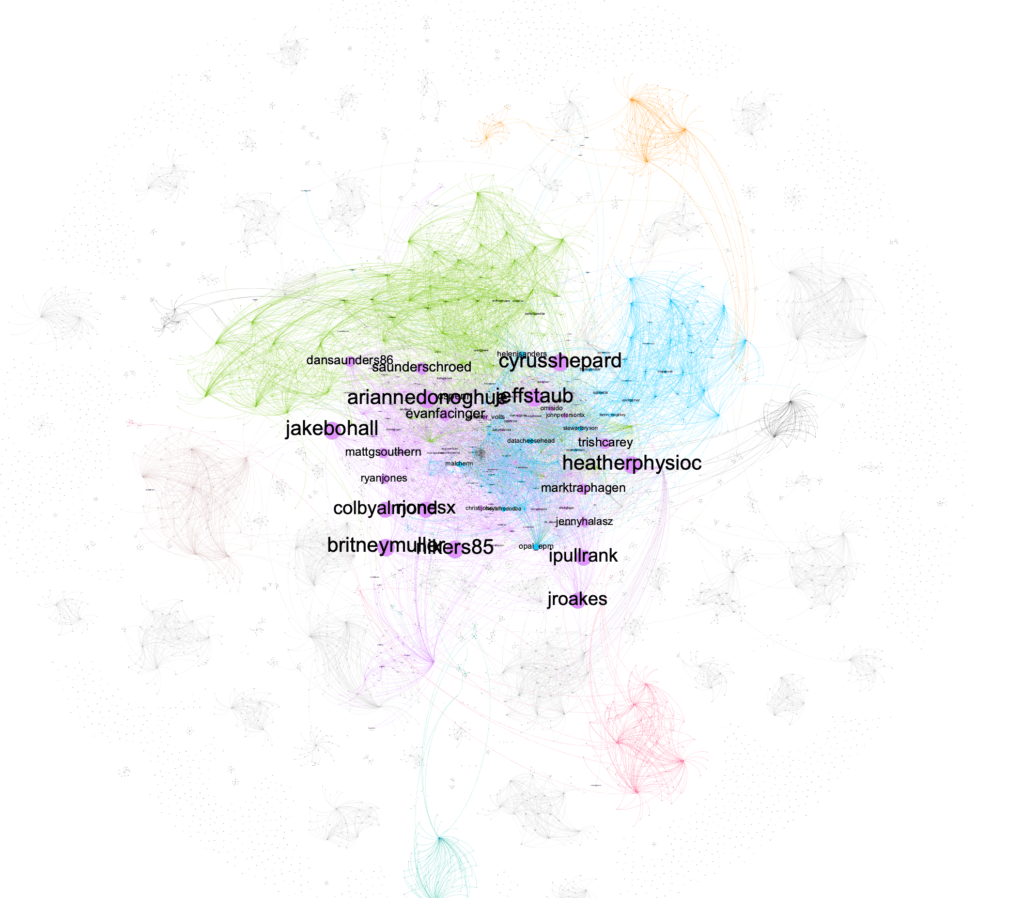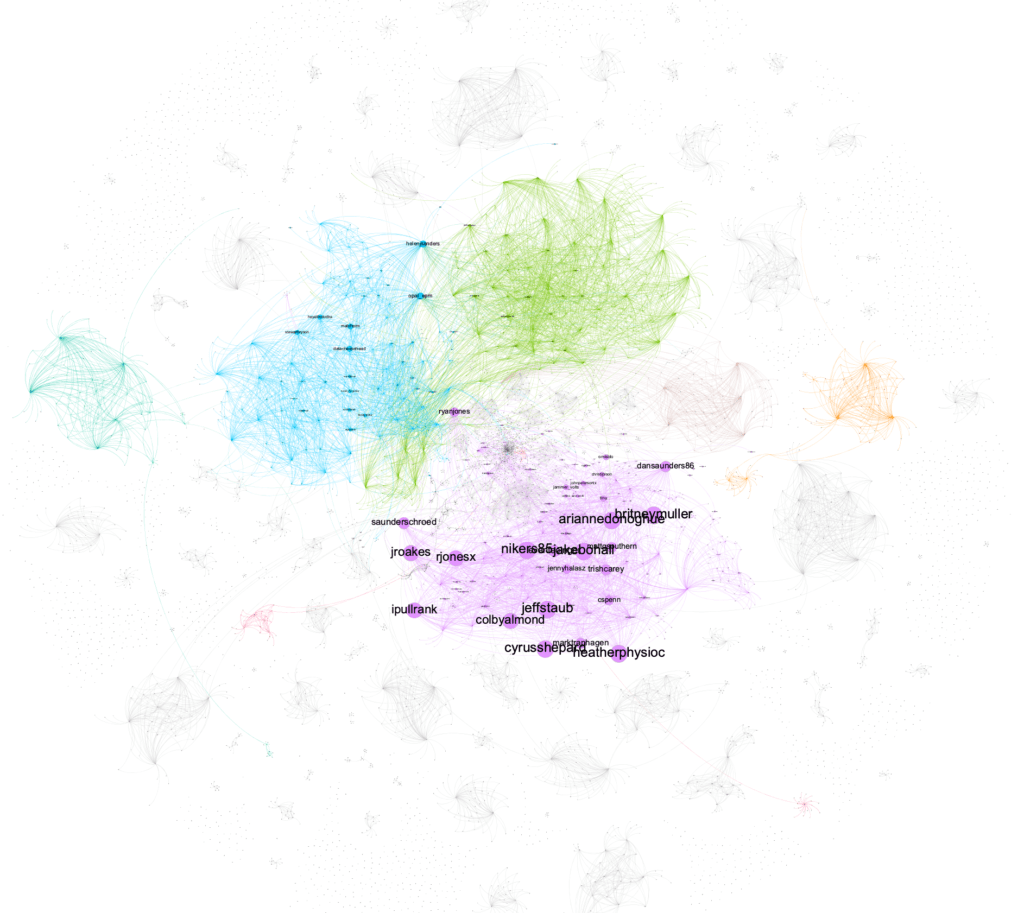This past week, our CEO Katie Robbert said, “can we be done with the “something about me and tag five people” on twitter thing? it’s really annoying now“. If you’re unfamiliar with the reference, there’s a Twitter meme where you share 5 jobs you’ve held, and then tag 5 people:
These tag memes at first seem like just silly fun, a few minutes’ diversion from the issues of the day, and for many people, that’s all they are – and all they need to be. However, if you’re interested in understanding how social networks actually work, and the value that networks provide, tagging memes like this can be a wealth of information.
The Value of Social Networks
Social networks provide value above and beyond other forms of marketing data because they help us understand connections. Who is connected to whom? How do different communities coalesce? How does information spread from one person to the next? Traditional marketing data doesn’t tell us this; we can know who visited our website, or who signed up for our email list, but we have no insights into how different audience members are connected to each other.
If we could determine how information and connections work, we could be much more efficient and effective in our marketing. Instead of broadcasting our message to the world in the hopes that someone listens amidst the incredible noise of today’s media environment, we could reach out to just the people at the heart of their network. As long as our message is useful and valuable to them, they’ll be the ones to spread it within their network, and we’ll conserve marketing dollars, hours, and effort.
Digging Into The 5 Jobs, Tag 5 Meme
Let’s look at how this played out with the 5 Jobs, Tag 5 meme. Using data from our partner Talkwalker, we see that the meme’s shelf life was approximately two weeks, starting in mid-march, ramping up towards the end of March, and petering out in early April:
If we take this data and look at it at three key intervals – early inflection, peak, and present day, we’ll see how the network changes and grows. Using a machine learning technique called network graphing, let’s look at March 24, just as the meme begins to take off:
We see that the meme’s origins are in the sports community. Using the eigenvector centrality algorithm, we see who’s tagged – mentioned – the most, and from that we can determine which community the meme is spreading in. It begins in sports, but it doesn’t stay there. Some people who have interests in both domains catch on, and share it to a different domain. Let’s advance to March 28:
We now see that the meme which began in sports has spread to several communities, the most prominent of which is the SEO community. SEO marketers began sharing this rapidly, and it spread massively to other, smaller communities. Let’s advance to the present day, April 3:
We now see that the meme has spread to even more communities, but the original starter communities remain strong in their conversations about the meme, filling in the members of each community who might not have been tagged early on.
What Do We Do With This Meme Spreading Data?
If these maps look familiar, they should. Like anything that spreads – viruses, information, fake and real news – meme spread obeys the basic laws of network dynamics and infection. However, unlike other types of spread, memes have precise lineage and no hidden/unaccounted for data. That makes them exceptionally valuable to marketers. Suppose you wanted to market to the baseball community. Looking at the above chart, you could extract just the green portion of the graph – the baseball fans – and turn that into a Twitter-based advertising list, or do research on the most prominent nodes in that network for other forms of outreach.
If you wanted to understand whose interests cross between baseball and SEO for highly tailored advertisements, you’d extract those individuals with connections to both communities.
If you wanted to see over time who was most effective at spreading the message, you’d identify those nodes in the network with the highest number of incoming and outgoing connections, signifying someone who knows everyone and more important, someone that everyone knows and thinks to tag.
These sorts of memes are really important for mapping a community, especially when there’s no other community event occurring, because most of the time when we run network graphs, it’s around some focal point like a conference. Who are the most talked about people at a conference? Typically, it’s the speakers – which means that other, influential nodes in the network may be drowned out. A meme like this lets us see a community in a different light, a different context – and could be critical for marketing outreach when there isn’t a major conference or event happening.
Don’t be too quick to dismiss tagging memes – they may be exactly the data you need to understand what’s happening in your community, and be the data foundation for a successful outreach program.
|
Need help with your marketing AI and analytics? |
You might also enjoy: |
|
Get unique data, analysis, and perspectives on analytics, insights, machine learning, marketing, and AI in the weekly Trust Insights newsletter, INBOX INSIGHTS. Subscribe now for free; new issues every Wednesday! |
Want to learn more about data, analytics, and insights? Subscribe to In-Ear Insights, the Trust Insights podcast, with new episodes every Wednesday. |
